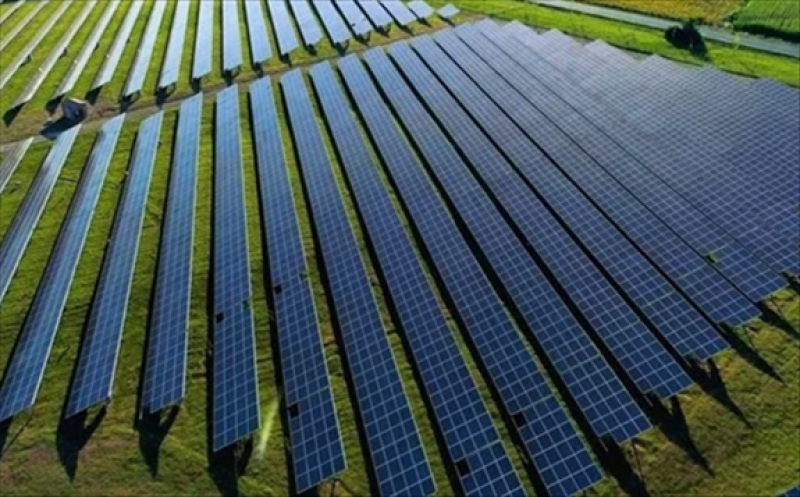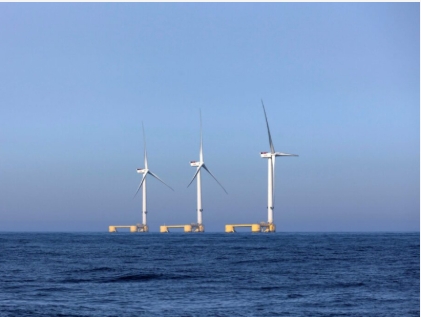The combination of thin-film technology and perovskites promises to bring increased efficiency to solar panel technology; however, the technology is currently locked in the research and development stage. The GRAPES Spearhead Project from Graphene Flagship is one major new initiative that is expected to make thin-film perovskite technology a reality in the solar power sector.

Considered to be any crystal material with a structure similar to that of titanium mineral perovskite, perovskites are a promising new class of materials. They are used in solar technology but are often plagued with a high degree of instability and low efficiency at industrial scales.
Several Graphene Flagship partner companies have introduced layered solar technology based on graphene and related materials that promises to increase the efficiency and stability of thin-film perovskite technology. The current goal is to apply this graphene-perovskite technology to viable solar panels that would then be successfully tested in real-world conditions.
Graphene-Based Perovskite Panels
Graphene-enabled perovskite panels are created by a chemical deposition that is applied to a substrate. This straightforward application process and the promise of the technology make for an attractive prospective, especially in areas that desire versatile and lightweight solar power solutions. Even though perovskite cells have demonstrated exceptional potential, with efficiency increases going from 12% to more than 23% in four years, their efficiency diminishes significantly as panel size increases.
Stability is also an issue with graphene-enabled perovskite panels. The longest lifespan documented for a perovskite panel is around 12 months, which is much shorter than the 25-year lifespan of conventional solar technologies.
The GRAPES Project
As part of the GRAPES project, there will be an official designation of two locations for perovskite plant testbeds. The project aims to finish with a report on the successful field testing of graphene perovskite solar panels and the potential of this novel layered material for cost-effective solar panel manufacturing. The report will be shared with the broader industry.
The GRAPES project aims to boost the effectiveness of photovoltaics using methods and equipment that could be extended on an industrial scale. The current record for conversion efficiency of sunlight is 25%, which was achieved with industrial-scale silicon solar panels. However, silicon cells are slowly approaching their upper limits, which is why research efforts are focused on new materials.
The GRAPES project uses silicon, perovskite, and graphene materials. The combination of silicon and perovskite helps absorb a wide variety of light, while graphene improves the stability and shields it from environmental effects.
The panels will be tested with proven accelerated lifetime methods that are conducted outdoors in real-world conditions. The focus of these tests is to determine the viability of lowering the levelized cost of energy to less than €20 ($24) per MW.
In 2020, the GRAPES project announced the development of a completely dry transfer technique for fabricating single-layer graphene perovskite cells that exhibited a high level of conductivity and transparency. The project was able to recognize essential materials for panel lamination that were suitable for both perovskite and crystalline silicon cells.
The project has announced it aims to install 20-sq. meter graphene-enabled perovskite panels with a conversion efficiency greater than 23%, which is enough to outperform the strongest commercial silicon panel. The outdoor test will help commercialize graphene-perovskite cells by highlighting the potential of this technology for cost-effective solar panel manufacturing.
Prevailing evaluation protocols for solar energy projects devices were created for mainstream solar solutions. These methods use indoor testing protocols that are calibrated to indicate outdoor performance. While these methods have proven acceptable for existing technologies, they may not accurately predict the long-term performance of perovskite cells in natural conditions and the newest solar technology projects. Test protocols that will properly forecast that long-term performance is crucial to gaining confidence in perovskite solar solutions, which would likely unlock investment in production and further research.
Emerging Benefits in the Battle Against Climate Change
The emerging graphene solutions being used in photovoltaics are expected to unlock more effective and dependable solar panels. This will only add to the usage and propagation of affordable, renewable, and clean energy.
For both solar panel systems and wind turbines, the past few years have seen a remarkable drop in the levelized cost of energy (LCOE); a term used to describe the average cost to create electricity over the lifetime of a facility.
According to data from the International Renewable Energy Agency, the LCOE for solar decreased by 82% between 2010 and 2019. For onshore wind, it dropped by 39%, and for offshore by 29%. These kinds of reductions make renewable energies a lot more competitive or even less expensive than the cheapest fossil fuels. Continual research and development will enable even more efficient solutions, which allows us to meet even more progressive goals for climate change mitigation.







